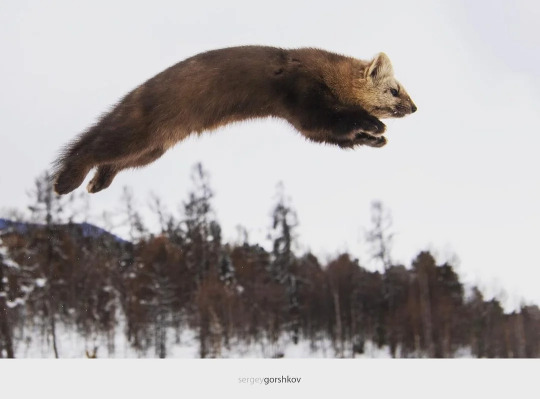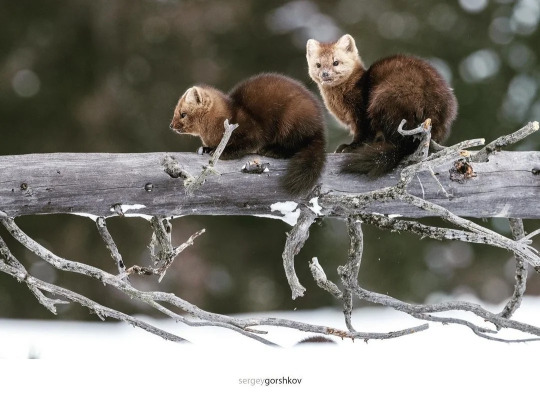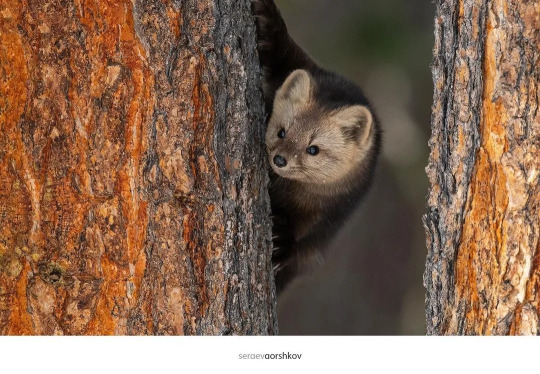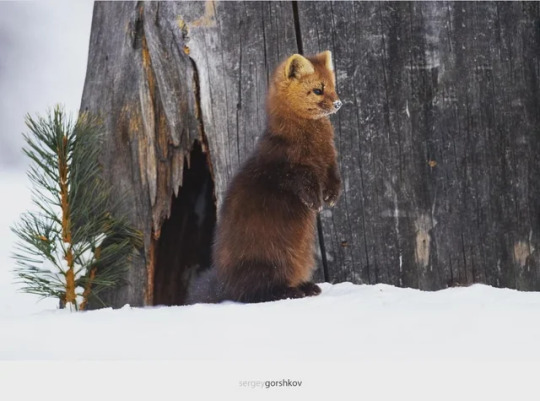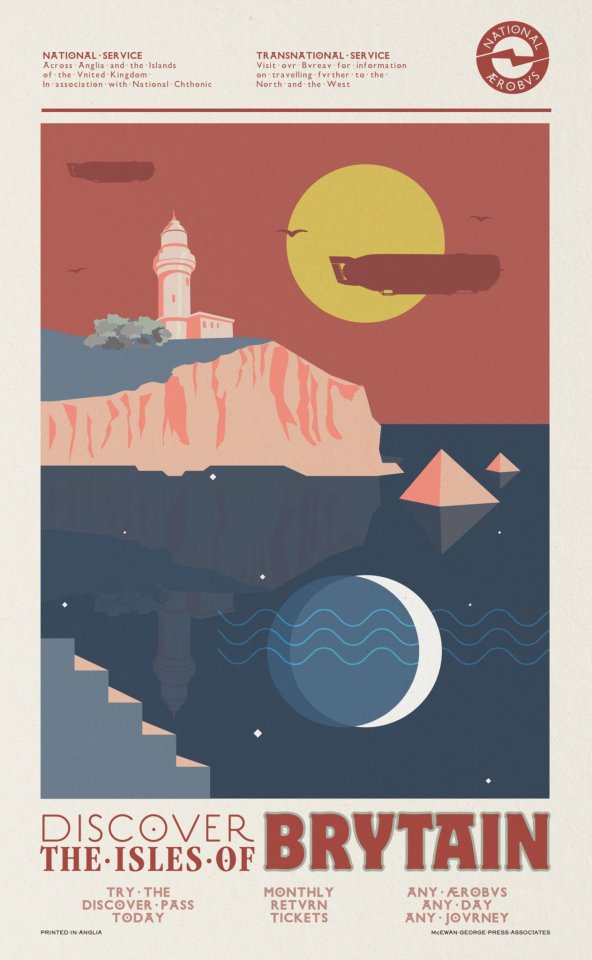dedicated to the spirit creatures and world-building of His Dark Materials
Don't wanna be here? Send us removal request.
Text
Lord Asriel: I went on numerous treacherous journeys through life-threatening cold, struggled continuously for funding, and paid a horrendous price to cut a doorway out of this world, completely screwing over the Arctic in the process.
Lord Asriel: And you’re telling me there was a portal to another world in Oxford this whole time.
Lord Boreal: Eeeeyup.
Lord Asriel: Oh, I HATE YOU.
Lord Boreal: It keeps me warm at night.
90 notes
·
View notes
Text
i really hate when people dismiss the ending of his dark materials because it leans into the trope "love saves the world". truly, that is what the story is about, but reducing it to a cliché is doing a disservice to the point the story is making. when it says that love says the world, it's rewriting the meaning of sin by saying that giving into desire is not shameful. it's telling us to be brave enough to experience. it's saying that dying for love can have powerful impact, but living for it is much more romantic. it's saying that storytelling saves the world, because telling stories is a language of love. it's saying that the bonds we create with other people will outlast death as long as we share our memories. it's showing how a simple childhood friendship is extraordinary enough to change the course of a war between heaven and earth. is there a better way to end a trilogy that intertwines so many paths of love than with a kiss that shifts the fabric of multiple universes?
1K notes
·
View notes
Text
the date in which his dark materials is set is ambiguous but since the amber spyglass was published in 2000 this year marks 25 years of lyra and will spending midsummer's day in their respective botanic gardens.....so what i'm saying is who would like to join me in oxford on 24th june for the silver anniversary of the bench??
136 notes
·
View notes
Text

random post: thinking about dæmons / his dark materials AUs again, specifically griffins/wyverns/cockatrices and their implications.
I came up with the idea of a clouded leopard/perentie/harris's hawk hybrid... but couldn't quite picture it, so I quickly smashed one out in photoshop. 🤔
6 notes
·
View notes
Text


Note: Pullman seems to have got Lithuania and Latvia mixed up.
I think this is from the 10th anniversary edition of The Subtle Knife includes Stanislaus Grumman's hand-drawn map of the Witchlands.
Some of the areas he labels have easily discerneable equivalencies in Will’s world. Often, however, his spelling is close to, but not quite the same, as a geographically comparable region in Will’s world. Thus, the places on this map are simply places in Will’s world that possibly correspond to places in Lyra’s.
Lyra’s World (Queen / Place)
Juta Kamainen / Lake Visha
Julia Ojaland / Navia
Reina Miti / Tikshozero
Ruta Skadi / Lubana
Serafina Pekkala / Lake Enara
Paula Pyhdjaron / Lake Ladoga
Katya Sirkka / Miekojarvi
Sara Leiro / Keitele
Tanja Lentara / Lake Umalese
Will’s World
Vizhas, Russia
Narva, Ida-Virumaa, Estonia
Tikshozero, Russia
Lubana, Madonas Rajons, Latvia
Inari, Lapplands Lan, Finland
Lodja, Parnumaa, Estonia
Mielojarvi, Ita-Suomen Laani, Finland
Keitele, Ostra Finlands Lan, Finland
Ozero Umbozero, Murmanskaya Oblast.
14 notes
·
View notes
Text
Professions / Personalities and Suggested Dæmons.
Example 1: Investigator who is tenacious, stubborn, and straight-forward, with integrity:
Dæmon logic: determined and stubborn (mustelid or mustelid-like; can dig their big claws in and hang on), straightforward (stocky rather than slinky and energetic), muck-raking (something adapted for uncovering earth).
Suggested Dæmons: Hog Badger, or (if they also have a disdain for tabloid press) Aardvark.

(See: Eddie Brock in Venom. Brock literally means badger!)
.
Example 2: Wise leader of a gang of jewel-thieves, the brains of the operation, trusted to plan out their heists, especially of otherworldly objects.
Dæmon logic: Thinker (bird), trusted navigator (corvid), avarice (corvid that steals sparkly things), otherworldliness (blue).
Suggested Dæmon: Magpie.

(See: Fagin in Oliver Twist.)
.
Example 3: Someone who's only pretending to be the wise leader of the jewel-thief gang, but is actually a smooth-tongued liar planning to stab them in the back.
Dæmon logic: Thinker (bird), trusted navigator (corvid), avarice (corvid that steals sparkly things), deceit (bird that only looks like a corvid that steals sparkly things), bloodthirsty (red).
Suggested Dæmon: Australian Magpie (actually a butcherbird).

(See: Heath Ledger's Joker.)
.
Example 4: Clever Female smuggler or pirate, seen as prudent / trusted to navigate murky waters, but leads people astray into otherworldly adventures.
Dæmon logic: Thinker (bird), smuggler/pirate (marine/river-based), trusted navigator (corvid), double life (appearance of a corvid), other worldliness (blue).
Suggested Dæmon: Boat-tailed Grackle.

(See: Elizabeth Swann.)
.
Example 5: Reluctant warrior with a calm demeanour, honourable but more concerned with fighting to protect his loved ones than a great cause; has had some experience of privation and otherworldly adventures, especially in a mountainous region of Europe.
Dæmon logic: Calm (greyish colours), warrior (cat), reluctant (domestic), honourable but a homebody (exotic-looking), experience of extreme privation (white), otherworldly adventures (blue), in mountainous Europe (alpine).
Suggested Dæmon: Alpine Lynx

(See: Bucky Barnes.)
#his dark materials#long post#meta#dæmon analysis#dæmons#avian#feline#mustelid#op#horizontal#q#corvid#fancast
13 notes
·
View notes
Text
Colonialism in His Dark Materials
CW: racism, sexism, sexual violence
Spoiler warning: all the books in the His Dark Materials series, as well as La Belle Sauvage, The Secret Commonwealth, and Once upon a Time in the North
Intro
His Dark Materials takes place in a world like our own, but not quite like our own, which is evident in everything from daemons to their use of anbaric light instead of electric light. It’s also evident in the way national borders have evolved in their world, as is clear if one looks at the map of Lyra’s world:

(Source: His Dark Materials Wiki)
It should be noted that while this map is to my understanding an official in-world map, it doesn’t seem to include every country, for instance there is no mention of Norroway which is mentioned in Northern Lights (Pullman 2011a, 170). I spent quite a bit of time trying to figure out how the North in this world functions and compares to our world in this essay, and the parallels one can see to the history of our North. Furthermore, a while back the excellent podcast Girls Gone Canon pointed out that in The Subtle Knife Lee Scoresby meets someone who he describes as a Yoruba man (2020a). This is interesting, since in our world, the Yoruba people are split across several different nations (mainly Nigeria, Benin, Togo, and Ghana) as a result of colonial borders. As Girls Gone Canon said, this makes one curious about the colonial history of Lyra’s world, was there a British (and French, Spanish, Dutch etc) empire in the same way as in our world? It’s clear that racism and xenophobia exists in Lyra’s world, for instance there are several instances of disparaging remarks about the Gyptians, Turks, and the Tartars. The Tartars are described as dangerous and brutal throughout Northern Lights, for instance in regard to their practice of scalping and trepanning enemies (Pullman 2020a, 26). We later of course find out that they don’t trepan their enemies, but that it’s a ritual reserved for those the Tartars esteem (ibid, 228). We also hear of Turk children kidnapping children (ibid, 105), and as I will expand upon further later, the gyptians are often looked down upon by landlopers (non-Gyptians). For instance there’s this quote from La Belle Sauvage, when Malcom tries to pass on Fader Coram’s warning about a flood coming to his teachers who think: “It was nonsense- it was superstition- the gyptians knew nothing, or they were up to something, or they were just not to be trusted.” (Pullman 2018, 277) But it’s also clear that while there is racism in Lyra’s world just as in our own, the history of Lyra’s world is different than ours, as can be seen in how the national borders have been constructed. So, one might assume that the systems of colonialism, and how coloniality still effects Lyra’s world is different as well. In this essay I will argue that the Magisterium plays a similar, if also different, role to the colonial powers of our world. I will specifically focus on three aspects of this; the gyptian’s situation and the Magisterium’s treatment of them, the Magisterium’s attempted control/colonialization of The North, and the Magisterium’s control/colonialization of Asia Minor.
Keep reading
23 notes
·
View notes
Text
The Nordic influences in His Dark Materials
TW: Eugenics, racism, sexism
Spoiler warning: The whole His Dark Materials book series (but mainly The Golden Compass/Nothern Lights), minor spoiler for La Belle Sauvage, very minor spoiler for His Dark Materials the tv-show.
When one of my favourite podcasts Girls Gone Canon announced that they were going to start covering the His Dark Materials novels in preparation of the launch of the TV-show this fall, I got very excited. I had read the first novel, The Golden Compass/Northern Lights, as a child but remembered very little so I decided to re-read the entire series. Reading the novels now, as a nerd in my twenties that’s working on getting a master’s degree in gender studies, and is born and raised in Sweden, I quite quickly got very interested in some aspects of the series’ worldbuilding. Namely, the way “The North” and its people are portrayed. Phillip Pullman’s story takes place in several different worlds, but we start out in what I’ll call “Lyra’s world”, a world similar to ours, but also quite different. Over the course of the first novel our heroine Lyra, travels with a group of gyptians (a people that seems to be inspired of our world’s Roma people) to “The North” to recover children that a corrupt religious government agency has kidnapped. Now, exactly what counts as “The North” is slightly unclear, but the group’s first stop is the town of Trollesund in Lapland. In our world both Trollesund and Lapland exists, but Trollesund is most definitely not in Lapland. The northern most states/regions in both Sweden and Finland are called Lapland. On the first map bellow Trollesund is marked out, and on the other two the states/regions of Lapland in Sweden and Finland are marked.

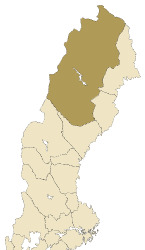

Regardless of exactly where Trollesund is, I’ve always assumed it to be in a Swedish speaking area based on the names given to characters and places in the novel. These are for example Martin Lanselius and Einarsson’s Bar (Pullman 2007, 179). These names definitely sound more Swedish than Finnish. Lanselius could possibly be Norwegian as well, but the Norwegian version of Einarsson should be Einarsen (I have no specific source for this… but Swedish last names are often constructed as [name]sson, and Norwegian ones as [name]sen.). In the television adaption of His Dark Materials Trollesund seems to be in Norway however (Cremona 2018). Now, even if I’ve tried to figure it out, it remains unclear exactly where the Lapland of Lyra’s world is, but my guess is that it’s somewhere close to the Laplands of our world. It should be pointed out that in Pullman’s other novel that takes place in the same universe, La Belle Sauvage, a character visits the town of Uppsala (also a real town), which is stated to be in Sweden (Pullman 2017, 45). So, the state of Sweden seems to exist, and be separate from the state of Lapland. Now, why do I care about this so much? Am I just curious because this is “my neck of the woods”? Well, partly yes. But I also find it very interesting that Pullman has decided to create a separate state of Lapland and have several important parts of the plot take place there.
In our world, the word/name Lapland (or Lappland in Swedish) means l*p land/country. What does l*p mean you might ask? Well, it is a derogatory term for the Sami people, a people indigenous to North Norway/Sweden/Finland/Russia. Their own name for this land is Sápmi. The Sami people have lived in this area for several thousands of years and have traditionally (and still today) used that area for reindeer husbandry, hunting, and fishing (Samer, n.d. a). For a long time, they have been a nomadic people, which has been exploited to claim that they have no claim over the land, even though they have dwelt there. To write an exhaustive account of the exploitation of Sami people is beyond the capabilities of this essay, but I recommend the site www.samer.se which is a site run by Sametinget (the parliament representing the Sami people in Sweden, that also functions as a state agency), which can be translated into English. However, it should be noted that this exploitation has been sanctioned by the Swedish state pretty much since the time of the unification of Sweden in the 16th century (Samer, n.d b). At the same time the missionary work of the Swedish church started in the area and by the 17th century Sami people were forced to attend church (Samer, n.d. c). By the end of the 19th century racist ideas of eugenics/racial biology started gaining traction in Sweden, which also impacted Sami people:
It began being claimed that the Sami were born with certain “race characteristics” that made them inferior to the rest of the population. Therefore, they could not live as “civilized” people in real houses. If they did, they would become “lazy” and start neglecting their reindeer. That would result in all Sami people having to become beggars because they did not have any skills besides reindeer husbandry. The [Swedish parliament] decided in 1928 that the Sami who were not reindeer herders would not have any Sami rights either. For example, they were given no special right to hunt and fish in the areas where their ancestors had lived. In this way, the state drew a sharp boundary between the Sami living on reindeer husbandry and those who support themselves in other ways. The Sami schooling was also affected by racism. A law about a special nomad school came in 1913 which stated that teachers would wander around the mountainous regions in the summer. There, the youngest schoolchildren would be taught in the family’s cot for a few weeks each year during the first three school years. The rest of the school time consisted of winter courses in regular schools for three months a year for three years. The teaching would only cover a few subjects and it had to be at such a low level that the children were not “civilized”. Children of nomadic Sami were not allowed to attend public primary schools.
[my translation] (Samer n.d. d)
This eugenics movement did, however, not just result in substandard schooling and rights in general. I have previously written about the ideas of eugenics, as well as the way the Swedish state sanctioned them, but some aspects of it is specifically relevant to highlight in relation to the Sami people. In 1922 The State’s Race Biological institute (Statens rasbiologiska institut) was created in Uppsala in Sweden, by the “scientist” Herman Lundborg (Hagerman 2016, 961). He wished to research the Swedish race, and the mixing of races in Sweden. This was done in several ways, both by looking at records of marriages and birth (often supplied by church officials who had access to so called “church books” that recorded this), and physical examinations of people. He, and other “scientists”, travelled around Sweden to examine the Sami people and other groups that were considered inferior (such as Finns, Roma people, Jews, disabled people etc). The physical examination of Sami people often happened in collaboration with local churches or schools (Hagerman 2016, 984). Another part of the eugenics movement in Sweden that is worth mentioning here is the forced sterilisations that took place during this time. As Hübinette and Lundström writes:
(…) a sterilisation law to hinder the reproduction of the lower classes, and simultaneously to increase the birth rate among the ‘better stock’ (…) The sterilisation program was in effect between 1934 and 1975, and turned out to be one of the most effective in the democratic world, resulting in the sterilisation of over 60,000 people. Moreover, it was both racialised, gendered, classed and heteronormative, as national minorities like the Travellers and the Roma were proportionally more targeted than majority Swedes, and as 90 percent were women, mostly belonging to the lower- and working-classes, and many deemed to be sexual transgressors of the patriarchal order of the day. (Hübinette & Lundström 2014, 428)
So, in conclusion, these eugenic practices had profound consequences for several groups of marginalised people in Sweden during this time. These “scientific” practices were state sanctioned and supported by officials from The Swedish Church.
Now, lets get back to His Dark Materials and Lyra’s world. I want to start by pointing out some more “obvious” parallels between people and custom’s in Lyra’s world and the Sami people and culture, and then move on to some more theme-based comparisons. Firstly, if one compares a map of Sápmi with the map of the Witches’ land in Lyra’s world, there are striking similarities:
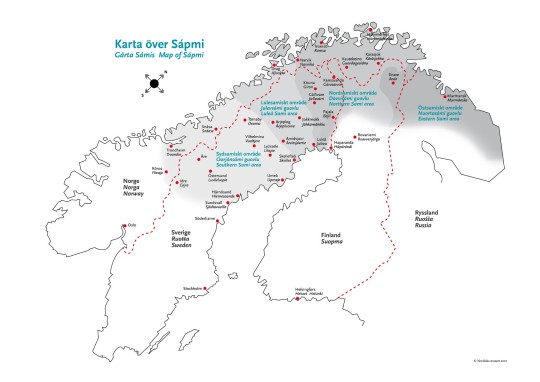
(Nordiska museet n.d.)
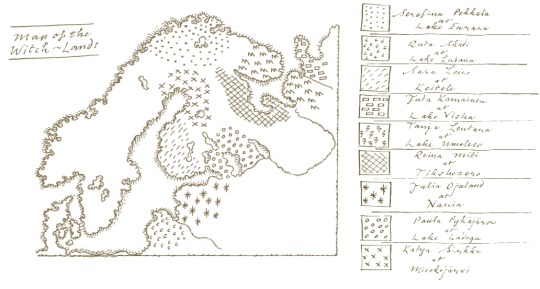
(His Dark Materials Wiki n.d.)
So, geographically there seems to be similarities between the Witches’ lands and Sápmi. But it’s not exactly the same, just as the Witches obviously aren’t exactly Sami people. However, they do also seem to have partly the same religion. The Witches (at least Serafina Pekkala’s clan) have a death goddess that they call Yambe-Akka (Pullman 2007, 305). This figure also exists in Sami religion (Oxford Reference n.d.). Her name can also be spelled Jábbmeáhkko (Samer n.d. e). Furthermore, the Witches in general seem to be very close to nature, and not as focused on material wealth etc as other humans (Pullman 2007, 299). This seems quite similar to a sort of stereotypical view of Sami people and indigenous people in general. On multiple occasions the books also describe how the Witches live close to the veil between worlds and can hear the undead whispers from beyond it (ibid, 174). This seems similar to the Sami beliefs in how a nåjden/noajdde (a shaman) could communicate with the spiritual world, including communing with Jábbmeáhkko (Samer n.d. e). However, there is no mention of actual Sami people in His Dark Materials. This seems somewhat odd, considering how other peoples from our world are called out, such as the Samoyed and the Tartars. Nevertheless, their culture does seem to have inspired Pullman’s depiction of the Witches.
I now want to look at some more comparisons between the North in Lyra’s world and Nordic/Swedish history in our world. In the story Lyra travels north to free children who have been kidnapped by The General Oblation Board (GOB) and taking to the station Bolvangar (Pullman 2007, 169). At Bolvangar the children are subjected to different medical studies and experiments. The children who are kidnapped seems to mainly come from lower classes and/or ethnic minorities (such as the gyptians). This is sadly very similar to the groups of people targeted by The State’s Institute for Racial Biology in Sweden. In both cases it was easier to experiment on people who had less power in society. As I outlined before as well, many Sami children were studied at schools and in collaboration with church officials. This seems very similar to a religious government agency taking of children to The North to experiment on them. Another thing I want to highlight is the comparison between the severing of children and dæmons, and sterilisation. In the books, children’s bond to their dæmons (their soul) are severed by the GOB in order to prevent “Dust” settling on the children (Pullman 2007, 275). Dust is considered dangerous and sinful, something that according to the church started infecting humans after their fall from the garden of Eden. Sterilisation in our world, on the other hand, took place in order to make the population “cleaner” and of “better” stock. Groups who were in different ways considered degenerate were targeted, including women who were perceived as promiscuous/sexual transgressors. In Lyra’s world a spiritual connection is severed by the Church in order to curb sinfulness. In our world a biological connection is severed by “scientists” (in collaboration with the Church at times) to control sexuality and reproduction. There is a definite similarity here.
Quite a lot more could probably be written about the similarities between the North in Lyra’s world and ours, but I have to stop somewhere. What I have tried to show here is how Pullman seems to have been inspired both by Sami history/culture, and Nordic history in general when describing the North of Lyra’s world. He also seems to have pulled quite a lot of the racism targeted against ethnic minorities in this area. However, neither of these influences are as explicit as they could have been. In the case of the Sami culture I feel like this is a shame, especially since he chooses to call a country/state Lapland. One would think that since he seems to have done some research on the Sami people, he could have chosen to call it Sápmi instead, or even just include mention of the Sami, as he does with other ethnic groups. However, many of the parallels between the experiments that takes place in the North in Lyra’s world and the experiments that have been taking place in our world are interesting, as well as horrible. I want to end this text by being clear that the sort of discrimination, exploitation and racism that I have described here is not just a product of history. Similar things still happen throughout our world. In the United States latinx children are kept in terrible conditions in concentration camps by the border (see for example Sacchetti 2019). In Chechnya there have been reports about concentrations camps for LGBTQ+ people (see for example Steinmetz 2019). In China reports state that Muslims are being kept and tortured in concentration camps (see for example Ioanes 2019). And in Sweden Sami people are still being denied rights to their land (Torp 2016; Jonsson 2018; TT 2019). We need to stay vigilante and keep fighting.
EDIT: Since Girls Gone Canon mentioned this in their excellent episode about episode 4 in the TV-show I felt compelled to make this small edit. In Trollesund we also meet the character of the sysselman. This post seems to be based on the office of “sysselmann” that exists in parts of Norway and the Faroe Islands, which is sort of like a sherrif. I didn’t consider this until after the last episode because when I re-read The Golden Compass I did so in Swedish, and the word didn’t stand out as non-Swedish. I also confused it with the Swedish word “syssloman” (which is more similar to an attorney). After realising that it wasn’t translated in the English version of the story I looked it up and realised that the word was actually Norweigan, but with a slightly more Swedish spelling (sysselMAN instead of sysselMANN). This seems to be in line with my other analysis that Trollesund has both Swedish and Norweigan influences, while Lapland as a whole also has Finnish influences. So basically Lapland seems to be a mix of Scandinavia and Sápmi…
EDIT 2: I recently realised that in Nothern Lights/The Golden Compass they mention that the “Norroway” government has influence in Trollesund (Pullman 2011, 170). Once again, this hints at the fact that Trollesund is in what in our world is Norway, as well as makes me even more confused about which states exist in the North. But I still think that Lapland is some sort of mix of Sápmi and other parts of Scandinavia.
References
Cremona, Patrick. 2019. “Where was His Dark Materials filmed?”. Radio Times. https://www.radiotimes.com/news/tv/2019-11-18/his-dark-materials-filmed-location/
Girls Gone Canon. 2019. His Dark Materials S1E4: “Armor”. https://girlsgonecanon.podbean.com/e/his-dark-materials-s1e4-armor/
*Hagerman, Maja. 2016. ”Svenska kyrkan och rasbiologin”[The Swedish Church and the eugenics]. In De historiska relationerna mellan Svenska Kyrkan och samerna: en vetenskaplig antologi [The Historical relationships between the Swedish Church and the Sami people: a scientific anthology], eds. Lindmark, Daniel & Olle Sundström. Skellefteå: Artos och Norma bokförlag [accessible online here: https://www.svenskakyrkan.se/filer/770f2627-57e5-4e06-b880-4ca6c4f94799.pdf ]
His Dark Materials Wiki. n.d. “Lake Enara” Accessed November 22, 2019. https://hisdarkmaterials.fandom.com/wiki/Lake_Enara
Hübinette, Tobias & Catrin Lundström. 2014. ”Three phases of hegemonic whiteness: understanding racial temporalities in Sweden”, Social Identities: Journal for the Study of Race, Nation and Culture 20 (6): 423-37. [accessible online here: http://www.tobiashubinette.se/swedish_whiteness_2.pdf ]
Ioanes, Ellen. 2019. “Rape, medical experiments, and forced abortions: One woman describes horrors of Xinjiang concentration camps.” Business Insider. October 22, 2019. https://www.businessinsider.com/muslim-woman-describes-horrors-of-chinese-concentration-camp-2019-10?r=US&IR=T
Jonsson, Berno. 2018. ”Stor oro bland samer när kommunen säljer mark.” [Large concerns among Sami people when the municipality sells land] SVT. October 8, 2018. https://www.svt.se/nyheter/lokalt/vasterbotten/stark-oro-bland-samer-nar-kommunen-saljer-mark
Nordiska museet. n.d. “Vem är same? Vem är svensk? Varför vill du veta?” [Who is Sami? Who is Swedish? Why do you want to know?] Accessed November 22, 2019. https://www.nordiskamuseet.se/utstallningar/sapmi
Oxford Reference. n.d. “Yambe-akka”. Accessed November 22, 2019. https://www.oxfordreference.com/view/10.1093/oi/authority.20110803125245136
Pullman, Phillip. 2007. Guldkompassen. Stockholm: Bokförlaget Natur och Kultur [this is the Swedish translation of The Golden compass]
Pullman, Philip. 2011. Northern Lights. London: Scholastic
Pullman, Phillip. 2017. La Belle Sauvage. New York: Knopf
Sacchetti, Maria. 2019. “1,500 more migrant children separated from parents at US border than previously admitted, ACLU says” Independent. October 25, 2019. https://www.independent.co.uk/news/world/americas/us-politics/trump-us-mexico-border-family-separation-migrant-children-aclu-a9170636.html
Samer. n.d. a “Sápmi.” Accessed November 22, 2019. http://www.samer.se/1002
Samer. n.d. b “Drömmen om outtömliga rikedomar i norr.” [The dream of inexhaustible riches in the North] Accessed November 22, 2019. http://www.samer.se/1229
Samer. n.d. c “I Guds tjänst” [In the service of God] Accessed November 22, 2019. http://www.samer.se/4441
Samer. n.d. d “Samepolitik i rasismens tidevarv” [Sami politics in the time of racism] Accessed November 22, 2019. http://www.samer.se/1042
Samer. n.d. e “Kontakt med andarna” [Contact with the spirits] Accessed November 22, 2019. http://www.samer.se/1139
Steinmetz, Katy. 2019. “A Victim of the Anti-Gay Purge in Chechnya Speaks Out: ‘The Truth Exists'” TIME. July 26, 2019. https://time.com/5633588/anti-gay-purge-chechnya-victim/
Torp, Eivind. 2016. “Girjasmålet – rättsprocessen” [The Girjas case- the trial proceedings] Accessed November 22, 2019. http://www.samer.se/4997
TT. 2019. ”Tvist mellan sameby och staten avgörs i HD” [Dispute between Sami village and the state to be determined in the Supreme Court] Aftonbladet. September 2, 2019. https://www.aftonbladet.se/nyheter/a/e8XrOl/tvist-mellan-sameby-och-staten-avgors-i-hd
*this is a chapter from The Swedish Church’s white paper about its treatment of Sami people.
38 notes
·
View notes
Photo

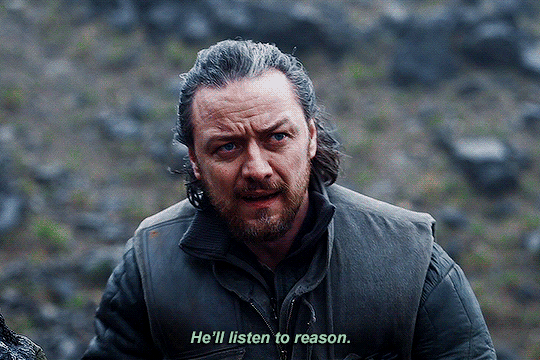
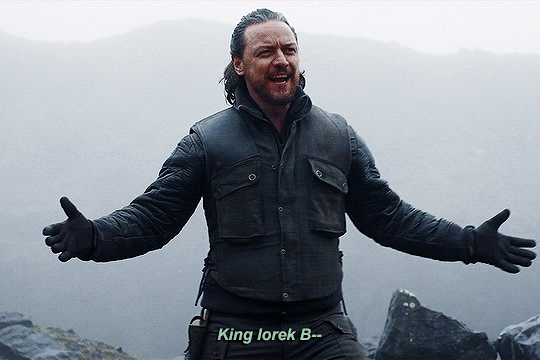
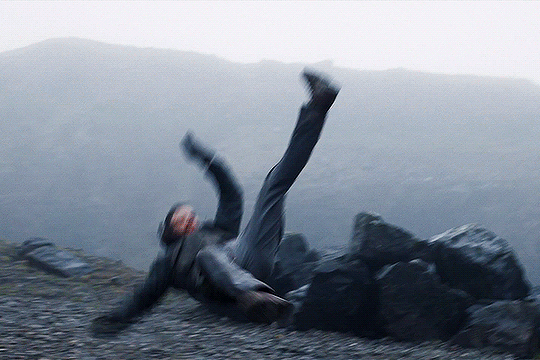
HIS DARK MATERIALS — 3.06 “The Abyss”
3K notes
·
View notes
Text
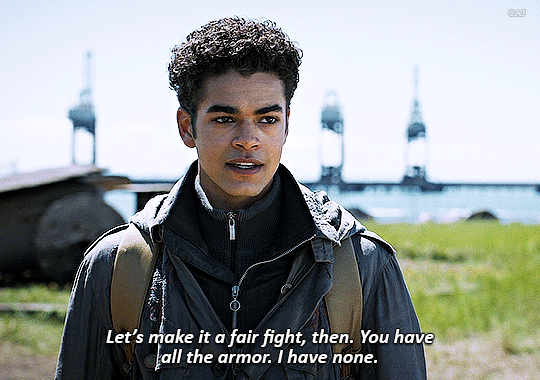
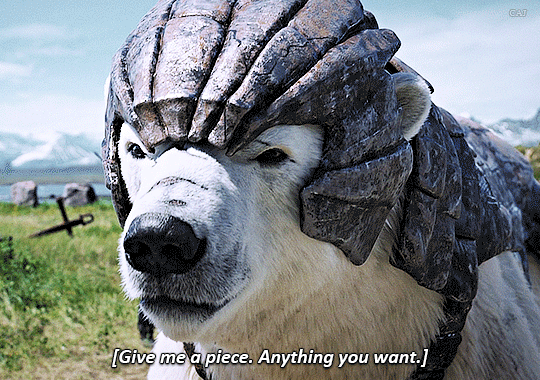
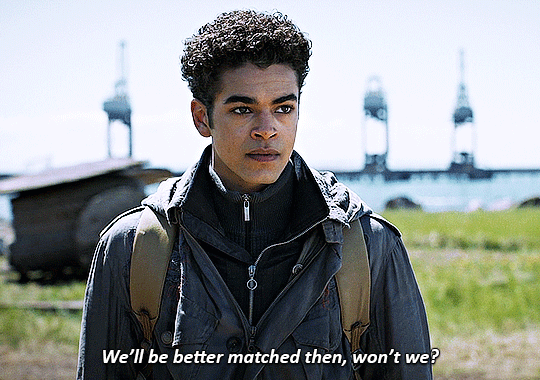
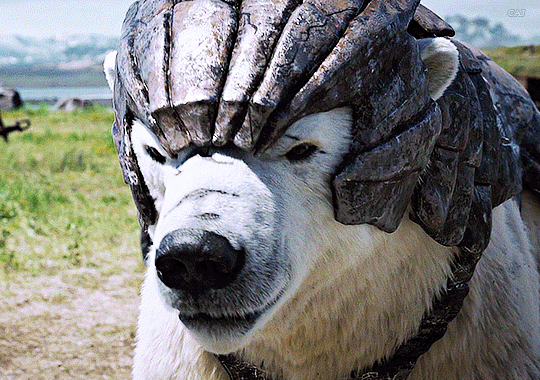

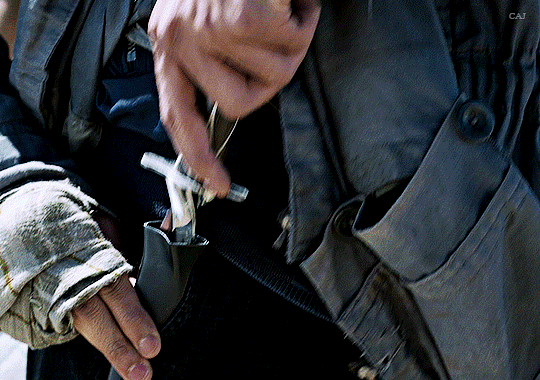

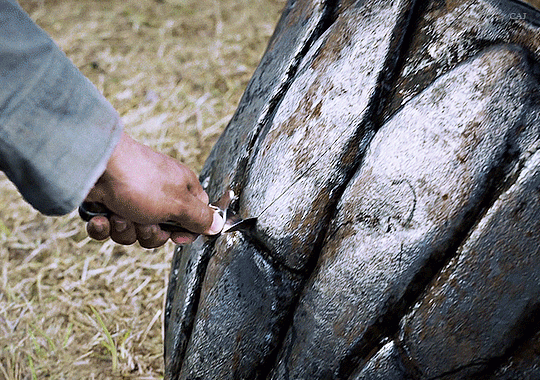
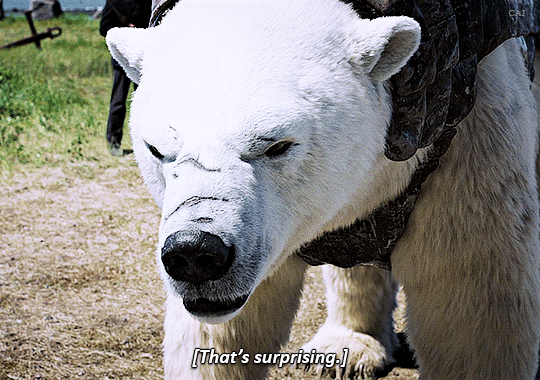
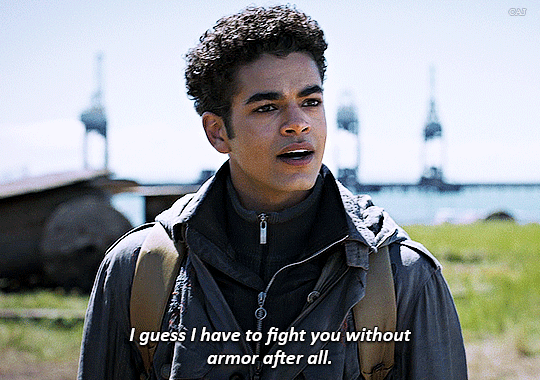
Will had begun to turn and call out, to keep them quiet: "Now you must keep the bargain. Look after the wounded people and start repairing the buildings. Then let the boat tie up and refuel." He knew that it would take a minute to translate that and let the message spread out among the watching townsfolk, and he knew, too, that the delay would prevent their relief and anger from bursting out, [...]. The bear watched and saw what he was doing and why, and understood more fully than Will himself did what the boy had achieved.
— The Amber Spyglass; Chapter 8
248 notes
·
View notes
Photo
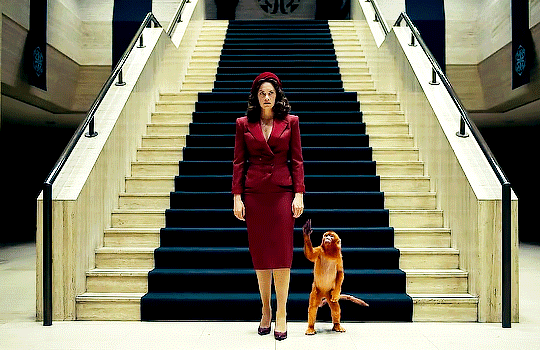

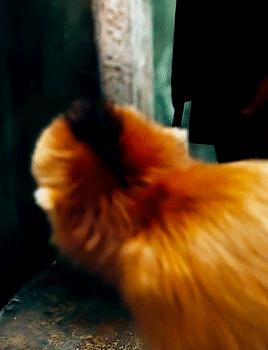
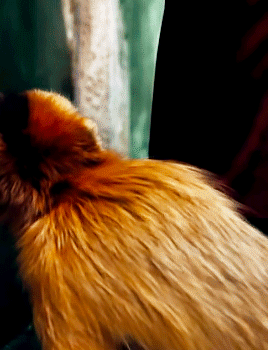
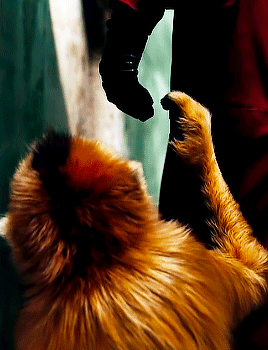
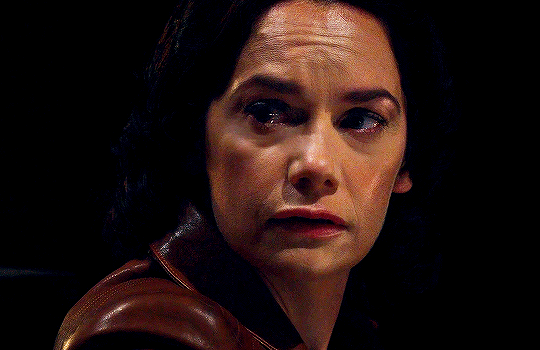
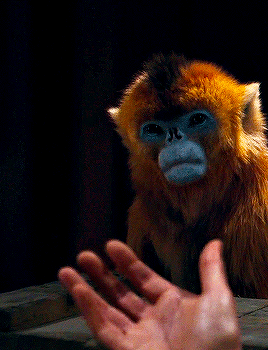
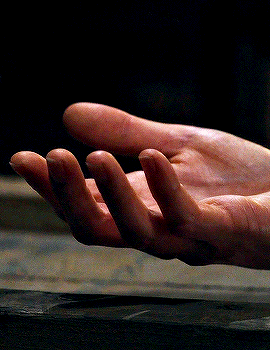
His dark materials 0104, 0203 & 0306 | Finally
1K notes
·
View notes
Text
i think abt the part in the golden compass where it was noted that if your daemon chose to assume the form of a fish or some kind of ocean dwelling creature you could never leave the water again. at best you could dock, maybe walk a bit away from the shore, but that's it. chained to the water because your physical soul form commands it.
34K notes
·
View notes
Text
Works insipired by Arnold Böcklin’s “Isle of the Dead”
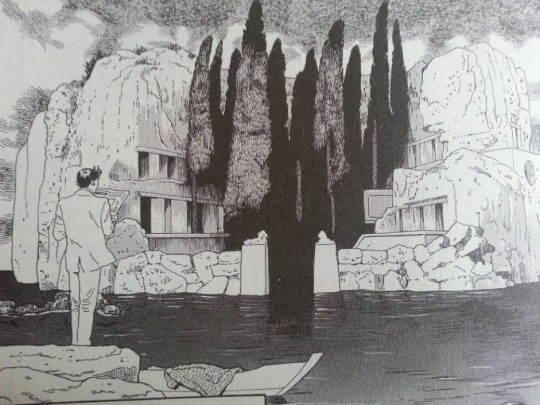
Suehiro Maruo, 2013
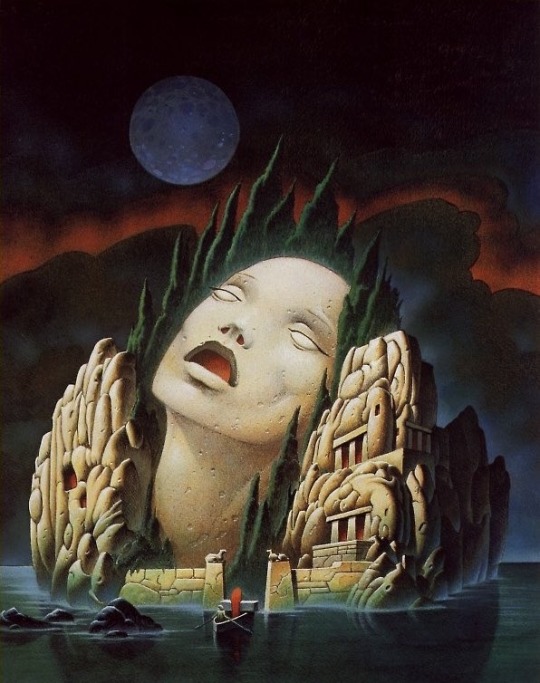
Philippe Caza, 1989
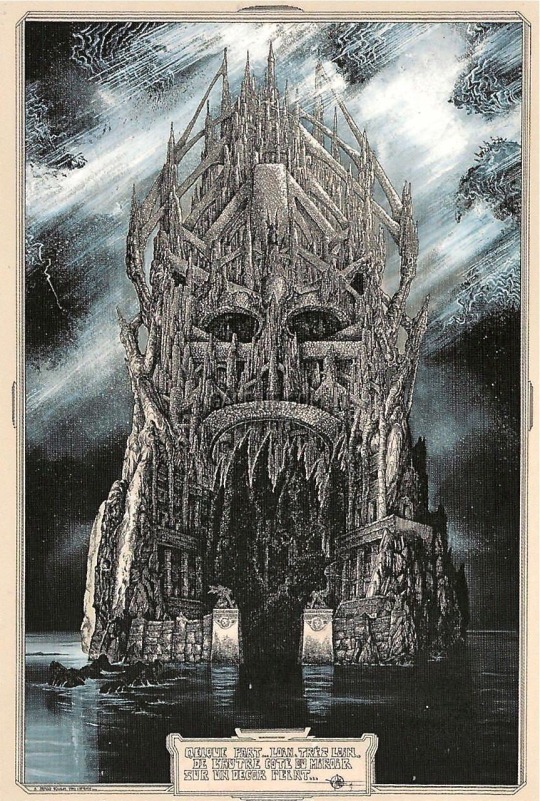
Philippe Druillet, 1976
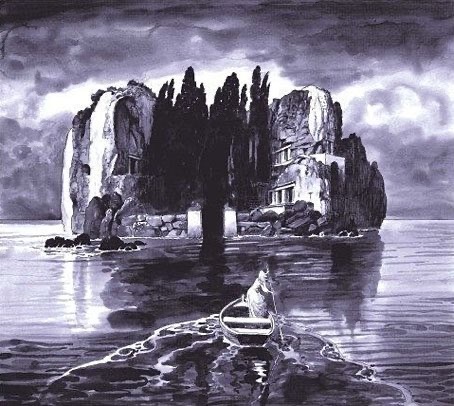
Milo Manara, 1998

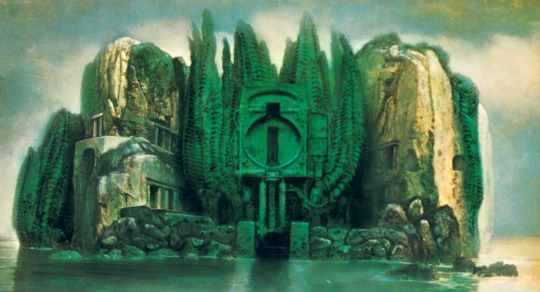
H.R. Giger, (right image from the series “Passages”) 1975
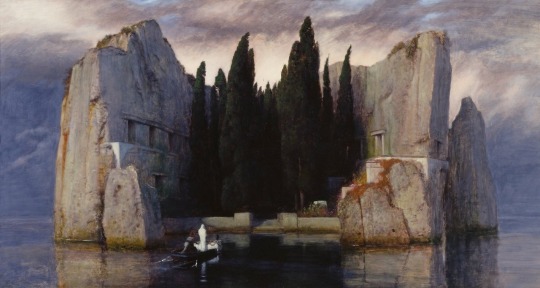
…and the original, Arnold Böcklin, 1880
9K notes
·
View notes
Text
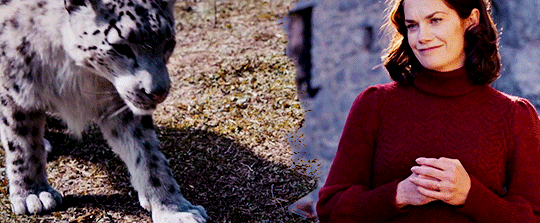

Masriel au > in which Stelmaria comes to ask Marisa for pets and Asriel's not having it [but secretly not so secretly loving it]
122 notes
·
View notes
Photo

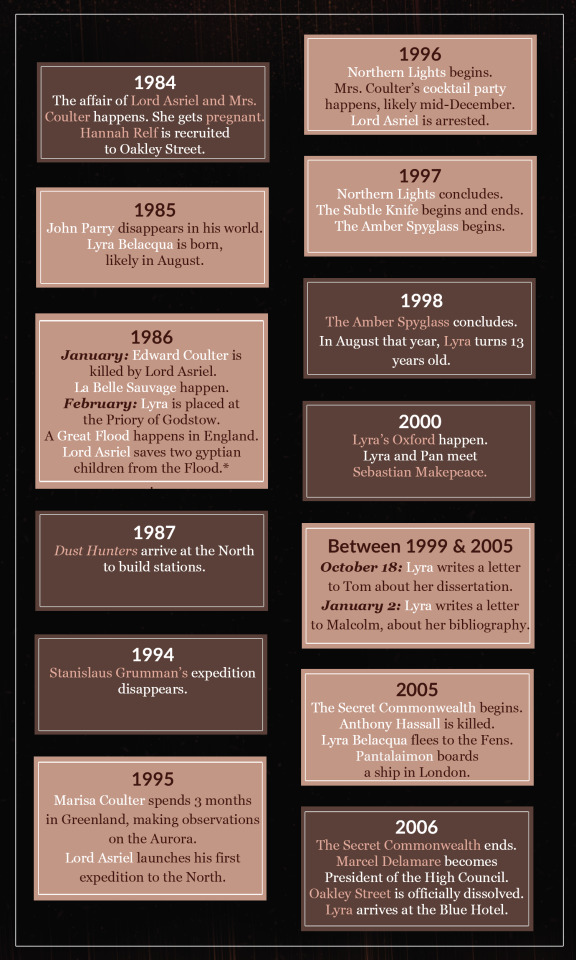
(You can click for better quality, these files are huuuuuuuuuuge).
Hello friends! I bring upon you my most recent work that nobody has asked for lol Which is a timeline for Lyra’s world. This is based on canon information, and there are a few speculations as well, but I tried to stay very true and close to the source material. This covers all the published novels, including the Collectors, so there might be spoilers.
You can check the Google docs, with all the information in the images, plus all my notes and observations, as well as the references for the dates.
395 notes
·
View notes
